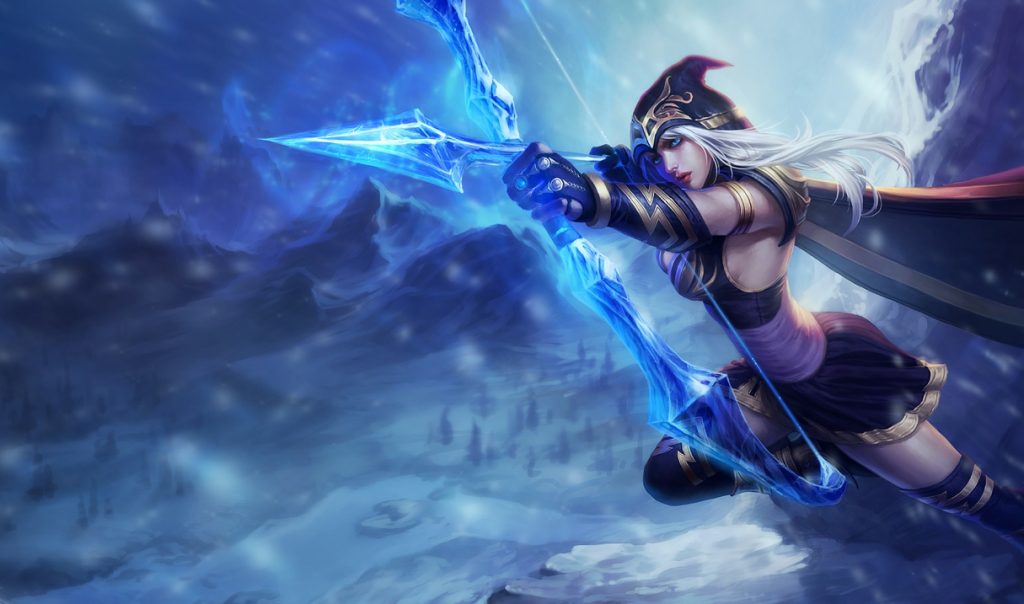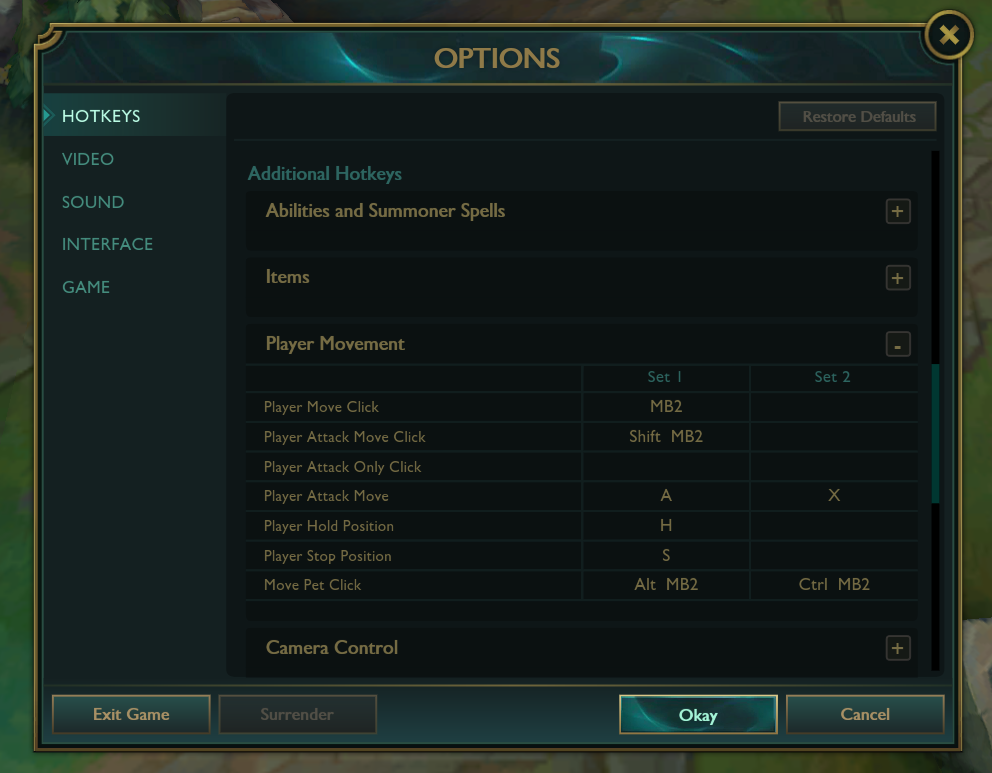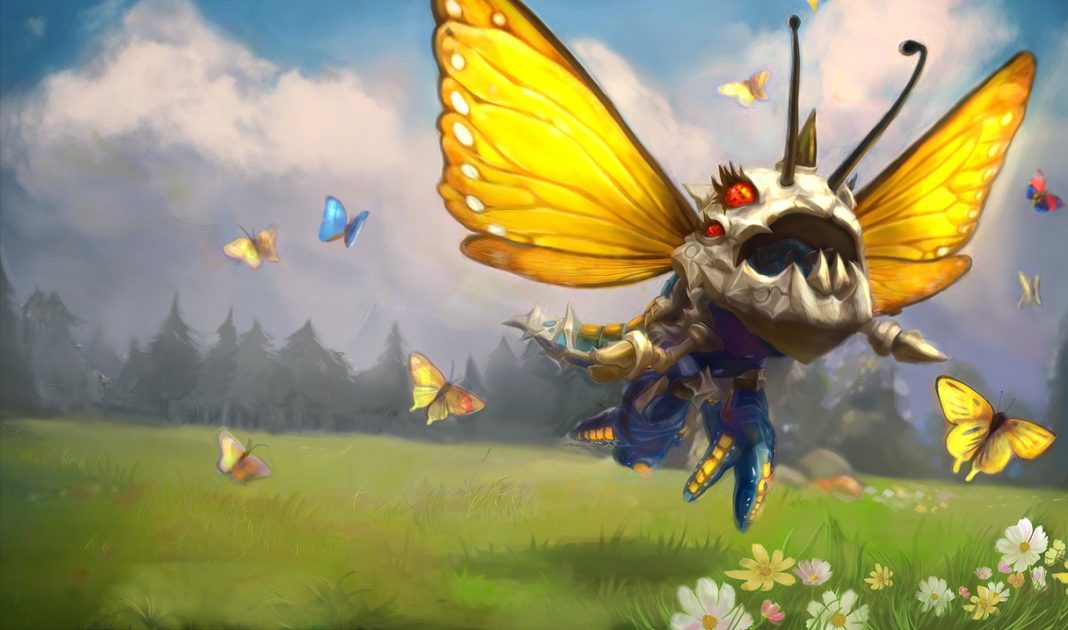Sometimes you can’t safely deal any damage, and you have to concentrate solely on running. But to maximize your role as a mage or marksman, you need to find opportunities to auto attack and deal spell damage, even when you’re moving away from a threat.
If you want to play squishy champions, you should practice the mechanics of kiting, and have a plan against the tanks and fighters who will and dive you.

When an enemy is hot on your tails, you’ve got three options: you can either stand and fight them, run, or kite them. If you’re a squishy ranged champion, you can deal a lot of damage while standing still, but tanks and fighters will get on top of you and blow you up. Staying alive by kiting allows you to deal more total damage over a longer period–even if you don’t manage to stay alive, successfully kiting an enemy is a great way to set up your teammates to finish the job.
When you’re a squishy ADC or mid champion, you don’t want to trade damage evenly against tanky tops, junglers, or supports. You always want to trade up, and it’s especially important to make profitable trades against tanks. If you continuously make efficient trades against tanks, the playmakers on your team are now in a better position to capitalize on the advantage you’ve created. One consideration of kiting is that your opponent will eventually catch up to you if you are stopping auto attack or to channel spells. You can’t run forever. (Usually.) If divers are ignoring your damage and killing you anyway, you need to focus more on running than retaliating damage. If you’re trying to kite the other team and failing, it probably means you’re lacking levels, gold, items, or all of the above.
Kiting Fundamentals: Stutter Stepping
You never want to stand still while you’re auto attacking. Instead, you’re far better off taking a moment to re-position in between your auto attacks. This technique, also known as “orb walking” or “stutter stepping,” helps you dodge skillshots and allows you to kite divers. Watch this clip of Doublelift, and pay attention to his movement–you’ll notice that he never stops moving.
To stutter step optimally, consider that there are two parts to an auto attack animation. The first part of the animation is the “windup,” and you can’t cancel the animation without also canceling your auto attack. But once your champion’s auto attack particle leaves the champion model, you can cancel the rest of the attack animation by right clicking to move. You should always cancel the latter half of your champion’s auto attack animation. Why? It’s a waste of time–in a game like League of Legends where the outcome can be decided by the smallest margins, every bit of min/maxing makes a difference.

It’s important to note that kiting with auto attacks is easier at low attack speeds, since the attack animations are so slow. The real test of your kiting skill is whether or not you can stutter step when your champion has a high attack speed. Remember, canceling your animation before the “windup” finishes will not only waste time, but stop the auto attack from completing–this is a costly mistake at any point in the game, but as your opponents scale, poor mechanical execution can become disastrous.
Kiting Basics: Attack Move Is Your Best Friend
Kiting is the most intensive mechanic for marksmen, but League of Legends gives you at least one tool to make your life easier: attack move. If you open up the Hotkeys section of the Options menu, you’ll see this screen:

The “Player Move Click” and “Player Attack Move Click” hotkeys function similarly, but attack move click is essentially a smartcast version of attack move. The attack move click command looks and behaves like your normal move clicks, except the moment you’re within range of an enemy champion, minion, or ward, you will auto attack it. Have you ever accidentally clicked the ground next to a dying minion? It sucks, doesn’t it? Next time, try attack move clicking that same spot on the ground beside the minion. Your champion will run towards that spot, but as soon as the target–in this example, a minion–is within range, you’ll attack it. Attack move commands can also be used to prevent you from walking out of position when you misclick. Check out this video for a longer description of how attack move commands work in League of Legends.
Kiting: How to Deal with Divers
The final piece of the kiting puzzle is making sure that you have a specific plan against the champions in your game who be diving you. One of the best ways to get the upper hand on divers is to force them to use their mobility spells before you do. Don’t let divers walk up to you without using a gap-closer. If you can force the diving champion to use their last mobility spell to get in melee range and you still have a mobility spell like Flash or Lucian’s dash, your chances of surviving the dive increase dramatically.
You May Like
To get you thinking about champion spell interactions, here are some common divers, along with some kiting tips:
Irelia: Don’t stand near caster minions. Irelia can one-shot them and reset her Q once she finishes Triforce. If she gets on you in melee range with her Bladesurge (Q) still up, you’re going to have a bad time.
Hecarim: If Hecarim is ganking you from behind in lane, consider Flashing over him so his E knocks you towards your tower instead of your opponent. Later in the game, don’t bother wasting your Flash to escape from a Hecarim until after his E connects. His ult is his only skillshot, and using Flash to get away from it is an excellent way to maximize the value you’re getting out of your own mobility spells.
Renekton: Slice and Dice is Renekton’s only “skillshot.” Side-step it and hope he doesn’t get the Dice reset. A Renekton without his E is very easy to kite.
Malphite: Most Malphites will telegraph when they are looking to to cast Unstoppable Force [R]. Go for the outplay and Flash his ult. There are only a few spells that are worth avoiding as much as Malphite’s Ult.
Zac: Landing Elastic Slingshot is integral to Zac’s engage. If there is an enemy Zac in your game, you should always anticipate that he will slingshot at you from the fog of war. Similar to Malphite, it’s better to flash from the initial engage. Don’t stand on his shadow!
Maokai: If Maokai casts his Twisted Advance [W] on you, don’t panic and use your mobility until after he roots you. Similar to a Vi ult, once Maokai has targeted you, there’s no escaping his W.
Kite perfectly by positioning your champion to take the littlest amount of damage, while dealing as much damage as possible from maximum range. Kiting your opponents, however, isn’t just about mechanical skill and precision, it’s about having a plan in the moment. Most champions have one key spell that you need to play around, so try to think about the game from the perspective of your opponent. Knowing the correct response to a scenario you’ve planned for is an important way to make outplays.
















